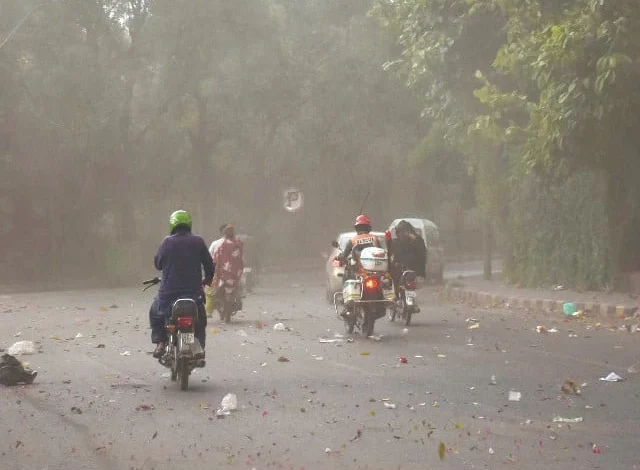Red alerts are issued in multiple provinces due to a severe monsoon forecast.

Meteorological officials in Pakistan have issued red alerts for several provinces, warning that through Tuesday, July 15, strong monsoon systems could cause landslides, flash floods, and urban flooding.
“Heavy to very heavy rainfall” could cause flash floods in Khyber-Pakhtunkhwa, Punjab, parts of Balochistan, Kashmir, Islamabad, and Rawalpindi, the Pakistan Meteorological Department (PMD) warned.
In addition to the potential for mudslides in Gilgit-Baltistan and hill torrents in Dera Ghazi Khan, windstorms can harm standing crops, trees, poles, and automobiles.
Read: Rain is expected soon, but drains are still clogged
Extreme humidity and intermittent thunderstorm activity are expected in Karachi and other Sindhi cities, even though they are not at risk of flooding.
It is predicted that the port city will experience temperatures ranging from 33°C to 36°C and 78% humidity, which will make things more uncomfortable. PMD forecasts rain and thunderstorms through the middle of the week.
There may also be sporadic thunderstorms and downpours in Thatta, Sukkur, Jacobabad, and Larkana, among other districts in Sindh. While Thatta may experience storms despite a comparatively milder temperature of 36°C, Sukkur may experience temperatures as high as 44°C.
Read More: Rain causes water levels in dams to rise
According to a Met Office spokesperson, “a strong westerly wave and monsoon currents from the Arabian Sea and Bay of Bengal will intensify rainfall across the country.” Over the next few days, this dual weather system is probably going to continue.
While Swat, Kalam, and Malam Jabba experienced consistent precipitation in KP over the last 24 hours, Okara (72mm), Sahiwal (66mm), and D.G. Khan (51mm) led the rainfall reports in Punjab. For cities like Lahore, Rawalpindi, Gujranwala, and Peshawar, urban flooding is still a major worry.
As the monsoon weather intensifies across the country, authorities have advised the public to avoid needless travel, secure vulnerable infrastructure, and get ready for emergency responses.